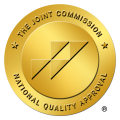Treating ADHD Patients During Addiction Treatment
According to the American Psychological Association, about 2.5% of adults have ADHD. Add to that number the 8.4% of children younger than eighteen, which means over 10% of the population of the United States have this disorder.1 Because of ADHD’s prevalence in the US and its link to substance abuse, it is essential for clients, caregivers, and providers to understand ADHD and addiction.
What is ADHD?
Attention deficit hyperactivity disorder, also known as ADHD, is a mental health condition that affects the ability to maintain attention and focus, along with feeling restless and impulsive. ADHD is diagnosed more often in children than adults. Without treatment, the illness can negatively impact school, work, and relationships. ADHD is sometimes confused with ADD, and although they’re similar, they are not the same. ADD consists of most of the traits found in ADHD, but without the hyperactive component.
What Causes ADHD?
The causes for ADHD remain unknown, but research indicates genetics as a highly probable risk factor. Along with genetics, ADHD causes and risk factors may include:
- Environmental exposure to lead, typically at a young age
- Maternal alcohol or tobacco use during pregnancy
- Prematurity or low birth weight
Many myths surround ADHD, one of which is what triggers it. Video games, television, poverty, family trauma, and sugar are all believed to be causes of ADHD, but research confirms that this is not the case. Although these factors may worsen symptoms — as they would with other conditions — they are not a root cause of it.
Do Children Grow Out of ADHD?
It was once believed that only children have ADHD. In truth, adult ADHD exists. Most children do grow out of the hyperactive component of the condition or the illness resolves itself before adulthood. However, less than 3% continue to have ADHD as adults. Data from the ADHD Institute shows that ADHD remains well into adulthood in 50% to 65% of young people with ADHD.2
Facts and Stats About ADHD
Information from the ADHD Institute sheds some light on how ADHD affects the population. For example, more males than females are diagnosed with ADHD. ADHD symptoms can also change depending on a person’s health and socio-economic relationship status.
Moreover, females tend to show the interactive component more than men. Meanwhile, adult males tend to show more hyperactive and aggressive symptoms. When diagnosed in adulthood, male adults are diagnosed with ADHD more often than women.
Signs and Symptoms of ADHD

There are three types of ADHD. Inattentive ADHD involves predominantly inattention and distractibility without hyperactivity. People with hyperactive-impulsive ADHD have symptoms that are mostly hyperactive and impulsive rather than inattentiveness. The combination type of ADHD involves all the symptoms of distractibility and hyper-activeness. Knowing the types of ADHD helps to determine treatment.3
The following are ADHD symptoms:
- Difficulty remaining still or not talking
- Easily distracted
- Takes unnecessary risks
- Often makes careless mistakes
- Finds waiting or taking turns challenging.
- Trouble focusing or remaining on task
- Forgetful about completing tasks or keeping appointments
- Interrupting others when they are talking
The Connection Between ADHD and Addiction
A strong connection exists between ADHD and addiction. According to the Substance Abuse and Mental Health Services Administration (SAMHSA), adults with ADHD are more likely to have a substance abuse disorder than adults without ADHD. The risk for addiction increases when ADHD occurs with other mental health disorders.4
Research shows that this link between ADHD and addiction exists due to three main factors. The impulsivity and behavioral issues connected with ADHD lead individuals to respond more readily than others to cravings and triggers. In addition, ADHD symptoms might drive individuals to self-medicate to alleviate distress and maintain focus. Lastly, the medications used to treat ADHD symptoms — typically stimulants— have the capacity for addiction.
ADHD Treatment and Addiction
The medication treatments for ADHD symptoms typically include one or a combination of the following stimulant medications:
- Dextroamphetamine (Dexedrine)
- Dexmethylphenidate
- Lisdexamfetamine dimesylate
- Methylphenidate (Concerta, Ritalin)
- Dextroamphetamine-amphetamine (Adderall)
In cases where stimulants are contraindicated, non-stimulant ADHD medications can be administered, though they may not have the same effectiveness as stimulant medication. The following are non-stimulant medications for ADHD:
- Atomoxetine (Strattera)
- Guanfacine (Intuniv)
- Clonidine (Kapvay)
Cognitive-behavioral therapy (CBT), when added with ADHD medication, can be an effective ADHD treatment. CBT helps individuals recognize problematic behaviors and thought processes, and teaches them to implement positive interventions in their place.
Integrated Intervention
Detoxification
The first step in treating dual diagnosis clients is detoxification. Detox enables the body to rid itself of the drugs and toxins in its system. During detox, a safe and supportive environment allows individuals to focus on remaining drug-free and managing detox symptoms. This time can be distressing and challenging and may take anywhere from one to seven days.
Stimulant withdrawal syndrome can occur with individuals recovering from amphetamine abuse. In the case of ADHD, individuals may become addicted to the stimulants prescribed to them, especially if they’ve used more than the prescribed amount for a long period.6 During stimulant withdrawal, an individual may experience excessive sleep, severe psychomotor retardation, but have normal vital signs. This condition can occur with detox for ADHD treatments and might last one to two weeks.
Inpatient and Outpatient Rehabilitation
Inpatient rehabilitation offers on-site around-the-clock care during recovery. Individuals typically reside at the facility to immerse themselves in recovery-focused intervention activities. Outpatient rehabilitation, on the other hand, provides a less restrictive setting and enables individuals to live off-site. Typically, inpatient rehabilitation occurs first, then a transition into an outpatient program occurs. After rehabilitation, a sober house or group home is usually the next step to recovery. Close monitoring by a health professional can help prevent relapse and offer ADHD treatment at the same time.
Living with ADHD and Addiction
Because most cases of ADHD begin in childhood, caregivers, teachers, and healthcare professionals must recognize and treat ADHD in children. By addressing the disorder early, caregivers and professionals can reduce the risk of developing comorbid disorders like substance abuse.7
It is also vital to educate children and adults about the responsible use of ADHD medication. Taking medication as prescribed and only taking what’s necessary reduces the chances of addiction.
Resources
https://www.psychiatry.org/patients-families/adhd/what-is-adhd
https://adhd-institute.com/burden-of-adhd/epidemiology/
https://www.cdc.gov/ncbddd/adhd/facts.html
https://www.nami.org/About-Mental-Illness/Common-with-Mental-Illness/Substance-Use-Disorders
https://www.medscape.com/answers/819502-79142/what-are-the-features-of-stimulant-withdrawal-syndrome
https://apsard.org/the-earlier-the-better-diagnosing-and-treating-adhd-in-preschoolers/




